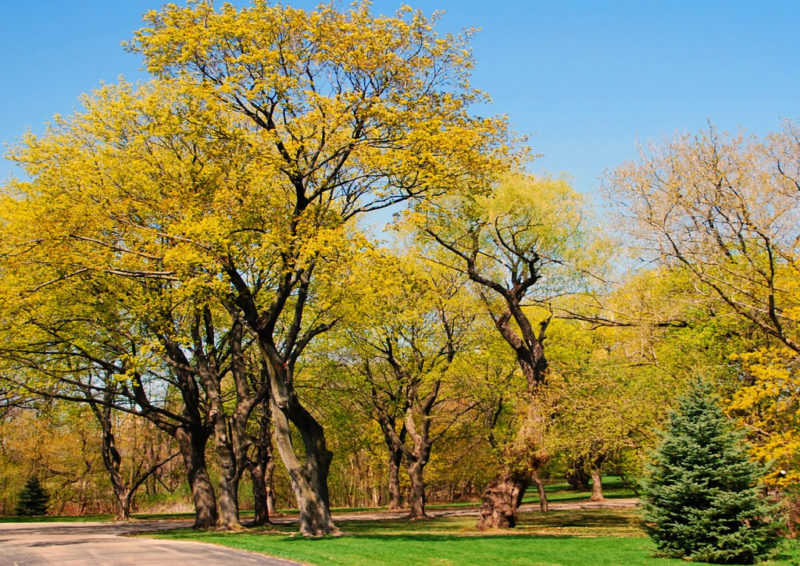A beautiful spring day can feel like the last day of school when you’re a kid – an unbelievable release into the world we didn’t even realize how much we longed for. Milwaukee historian John Gurda takes us on a walk through one of his favorite places to reconnect with nature.
It’s spring, come see the wildflowers. There are countless options in Wisconsin, but my favorite is St. Francis Seminary Woods. Just four miles from downtown Milwaukee—and four blocks from my house—Seminary Woods is 70 pristine acres on the city’s south lakefront. With 120 species of native plants, it’s among the last and least-spoiled remnants of the landscape that once covered Milwaukee County. This is the world as it looked before there was a single white face on the entire continent.
Seminary Woods would be a distinguished survivor almost anywhere in southern Wisconsin. The fact that it’s survived so close to the heart of Milwaukee is little short of miraculous. For that we can thank the Catholics. A group of Franciscan nuns made the first land purchase in 1849. They were joined in 1856 by German-speaking future priests who moved into a new seminary built with bricks made on the site. The forest remnant around them was managed as a place of rest, reflection and, as it turned out, preservation.
The seminary buildings are worth a visit themselves, but the woods is what draws you in spring. Once you find an entrance—there are several—you enter a world that has been evolving, in place, for thousands of years. The dominant trees are a stately blend of maples, oaks, and beeches. With their smooth, elephant-colored bark, the beeches are easily identified by the initials carved in their trunks.
The forest floor beneath the trees is currently a carpet of green, covered with trillium, trout lily, wood anemone, spring beauty, and a host of other ephemerals that must bloom, set seed, and die back before the tree canopy shuts out the sunlight. The procession of flowers will continue through the wild geraniums and jack-in-the-pulpits of June into the goldenrods and witch hazels of fall. Four bridges cross Deer Creek as it meanders through the Woods, and the bottomlands support a wetter class of plants, including skunk cabbage, marsh marigold, and swamp buttercup.
Wildflowers aren’t the only attraction. The forest is sprinkled with the ruins of grottoes and shrines erected for the edification of bygone seminary students. One dedicated to Our Lady of Lourdes has been thoroughly restored. At the very heart of the woods is a historic cemetery where priests, nuns, and a lone archbishop lie in sylvan repose.
Don’t forget the binoculars. Spring birding can be spectacular; I once saw five species of warbler in a single tree. Fox, deer, and coyote make frequent appearances. For at least a decade, a pair of resident great horned owls has produced fluffball chicks that delight those lucky enough to see them on the nest.
There is something wonderfully hopeful about a woods in spring. However tentative the first shoots, however fragile each flower, life has pierced the earth’s rough skin and reasserted its dominion. That dominion began long before we arrived and, with our care and respect, this untended garden will go on blooming long after we’re gone. It’s spring. In this blessed interval between snow and mosquitoes, come see the wildflowers.











